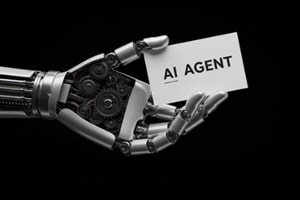Enterprises confronting increasingly sophisticated decisions turn to hierarchical AI agents to manage complexity.
As organizations move further into advanced AI agent development, structured multi-agent systems are essential for orchestrating tasks, distributing responsibilities, and maintaining high-quality decision-making at scale. With a clear layout and organized workflows, these systems streamline decision-making and resource allocation.
The successful deployment of hierarchical agents involves thoughtful design considerations, seamless integration with existing enterprise systems, effective optimization, continuous performance monitoring, scalable structures, stringent security measures, and a strategic deployment approach.
Hierarchical Architecture Design

Layer Definition
Hierarchical systems adopt a structured, tree-like architecture. At the highest level, strategic agents set overarching goals and delegate tasks to mid-level coordinators, who further distribute responsibilities to specialized, execution-oriented agents at the lower levels.
Decision tree structures form the foundation of hierarchical agent systems, allowing tasks to be subdivided methodically.
Upper-tier agents formulate broad strategies; mid-tier agents refine these strategies into actionable tasks, which lower-tier agents carry out. The architecture aligns decisions with relevant expertise, making the system responsive and efficient.
Priority mapping protocols allocate tasks across hierarchical layers based on urgency and importance. Immediate, essential tasks typically receive attention from reactive, lower-tier agents due to their rapid response capabilities; less urgent, strategic decisions are escalated upwards for deliberative handling.
Properly implemented, priority protocols effectively balance workloads and establish alignment with enterprise objectives.
Communication Flows
Effective communication patterns support the smooth functioning of hierarchical agents. Carefully structured messaging and synchronized data are fundamental to maintaining coherence across agent interactions.
Inter-agent messaging typically employs the use of either request-response or publish-subscribe patterns.
Request-response interactions are direct and specific, ideal for clear, immediate exchanges. Conversely, publish-subscribe patterns allow agents to broadcast information asynchronously, providing flexibility and reducing dependency on direct connections.
Data synchronization patterns, such as shared blackboard systems or centralized event logs, maintain coherence among distributed agents.
A common information repository or a durable event stream acts as a consistent reference point, allowing agents to access up-to-date data without excessive direct communication, lowering latency and overhead.
Enterprise Integration Framework
Integrating hierarchical AI agents into an enterprise environment requires clear connection points and solutions for legacy system compatibility. Proper integration promotes smooth operational transitions and minimizes disruption.
System Coupling Points
API gateway configurations are primary interaction points between hierarchical agents and other enterprise systems.
APIs standardize communication, allowing agents to interact seamlessly with other applications, while API gateways handle security, routing, and traffic management, maintaining orderly and secure interactions among enterprise components.
Current database integration methods range from direct database connections to data virtualization. Direct methods allow agents to query and update enterprise data in real- time, while data virtualization provides a unified, accessible view of multiple sources, simplifying complex integration tasks.
Legacy System Compatibility
Legacy system integration poses significant challenges, often due to outdated interfaces or limited connectivity.
Middleware solutions bridge these gaps by translating modern requests into legacy-compatible formats. At the same time, adapters or connector agents handle protocol differences, securing smooth communication without burdening the core system with legacy-specific details.
In practice, protocol adaptation means designing tools that allow outdated protocols to interact seamlessly with today’s standards.
Various elements, including custom API wrappers, message bridges, and file-based exchanges, can transform legacy data and communication formats, enabling legacy systems to continue operating alongside modern hierarchical agents.
Decision-Making Optimization

Priority Management
Task allocation algorithms play an essential role in distributing workloads. Techniques include market-based systems, where agents bid for tasks based on capabilities; priority queues that sort tasks by urgency; and load-balanced or predictive allocation methods leveraging historical data.
These approaches establish that resources are effectively allocated to tasks best suited for prompt resolution.
Resource distribution models underpin these algorithms by dynamically allocating resources across agents. They involve monitoring current workloads, agent performance, and resource availability to prevent bottlenecks from occurring.
Conflict Resolution
Override protocols provide straightforward mechanisms for resolving conflicts within hierarchical systems. If strategic goals are misaligned, higher-tier agents can intervene and override lower-tier decisions. Defined rules govern these interventions, maintaining operational clarity and effectiveness.
Escalation pathways offer structured processes for addressing conflicts that require broader consideration. Issues unresolved at lower levels escalate through the hierarchy until adequately addressed, potentially involving human oversight when necessary.
Performance Monitoring
Implementing hierarchical AI systems within any organization demands ongoing performance monitoring. Evaluating various metrics and implementing efficient response-time management contribute significantly to long-term system effectiveness.
Implementing metrics dashboards offers visibility into important performance indicators such as throughput, task latency, agent utilization, and error rates. Real-time monitoring facilitates the swift identification and resolution of issues, maintaining optimal system performance.
Regularly analyzing these metrics helps detect trends and forecast potential degradation, supporting reliability and scaling as demands increase.
Response time optimization focuses on minimizing latency across interactions. Techniques include asynchronous communication, parallel processing, and load balancing to identify and alleviate potential bottlenecks.
System profiling and adjustments, based on observed performance data, help further contribute to continuous improvement. Automating response strategies based on predefined thresholds can further reduce the need for manual intervention.
Scalability Architecture
Enterprise environments demand scalable AI architectures capable of effectively managing increased operational loads. Using efficient load distribution and strong redundancy strategies helps to further underpin this scalability.
Load Management
Distribution patterns employ load-balancing techniques, distributing tasks evenly across multiple agents to avoid overloading individual nodes. Consumer group models and partitioning techniques allow the system to adjust smoothly to varying workloads.

Clustering protocols enhance scalability by organizing agents into coordinated groups capable of dynamically redistributing workloads. Clustered configurations promote greater resilience and operational continuity, enabling systems to scale horizontally in response to increased demands.
Agents within a cluster can monitor each other’s status and share operational metrics, allowing the system to rebalance workloads proactively when nodes become strained or go offline.
Redundancy Planning
Failover mechanisms facilitate the automatic transition to backup systems or agents during operational disruptions. Configuring standby instances and implementing automatic failover processes minimizes downtime and maintains continuous availability over time.
Depending on recovery time objectives, these standby agents can be kept warm or hot, allowing them to take over processing responsibilities with little to no delay when an issue is detected. Integrating monitoring tools that trigger failover conditions based on defined thresholds helps secure a timely and accurate response to failures.
Backup strategies regularly store state information and system configurations, allowing swift restoration after failures. Data replication and periodic snapshotting allow for minimal disruption and rapid recovery efforts, helping to protect business continuity.
Storing these backups in geographically distributed locations further reduces potential risk, protecting against localized data loss or infrastructure failure.
Security Implementation
The enterprise-level deployment of hierarchical AI agents necessitates stringent security controls. Access control and encryption standards provide foundational security, protecting sensitive enterprise information and interactions.
Access control matrices explicitly define permissions, restricting agent access strictly to necessary resources. Integrated identity and access management systems authenticate and authorize agent interactions, consistently applying enterprise-wide security standards.
Encryption standards help protect communications and stored data alike. Transport Layer Security (TLS) encrypts data in transit, while advanced encryption methods such as AES-256 protect data at rest. Secure essential management practices and secrets storage bolster these security measures, maintaining the integrity of enterprise data.
Deployment Strategy
Strategic deployment practices are essential to successfully introducing hierarchical agents into enterprise environments. Thorough testing and phased rollouts mitigate risk and support smooth transitions.
Testing Protocols
User Acceptance Testing (UAT) frameworks evaluate system functionality against real-world scenarios, gathering important user feedback to refine performance and alignment with business requirements.
These frameworks typically simulate various operational conditions, enabling partners to identify discrepancies between expected and actual agent behavior before the system is released more broadly.
Integrating UAT early in the deployment process helps reduce rework later by exposing edge cases and interface issues that may not surface in isolated technical testing environments.
Performance benchmarks further validate system capabilities, setting realistic expectations regarding throughput and latency under load conditions. Benchmarking involves structured tests that measure how the agent handles peak traffic, varied input distributions, and concurrent operations to determine whether it meets production-grade reliability standards.
Rollout Phases
Pilot deployments offer controlled environments to introduce hierarchical agents initially, enabling focused monitoring and adjustments before broader implementation. These pilots serve as operational testbeds where early feedback can be gathered from selected user groups or business units without exposing the entire organization to unproven components.

Subsequent full-scale implementation gradually expands system deployment enterprise-wide, which often follows a region- or department-based schedule, allowing each phase to be evaluated for success criteria before moving to the next.
Schedule A Technical Review With An Experienced AI Agent Development Company
Adopting hierarchical agents within an organization transforms enterprise decision-making processes, allowing more efficient, informed, and strategic management of complex operational tasks.
To effectively implement these advanced solutions, which are developed precisely to your enterprise needs, Orases provides a wide variety of professional services. These include AI consulting, AI agent development services, ongoing support, and more. Connect with our team today to discuss your requirements, schedule a consultation online, or call us at 301.756.5527 to enhance your enterprise decision-making capabilities.






